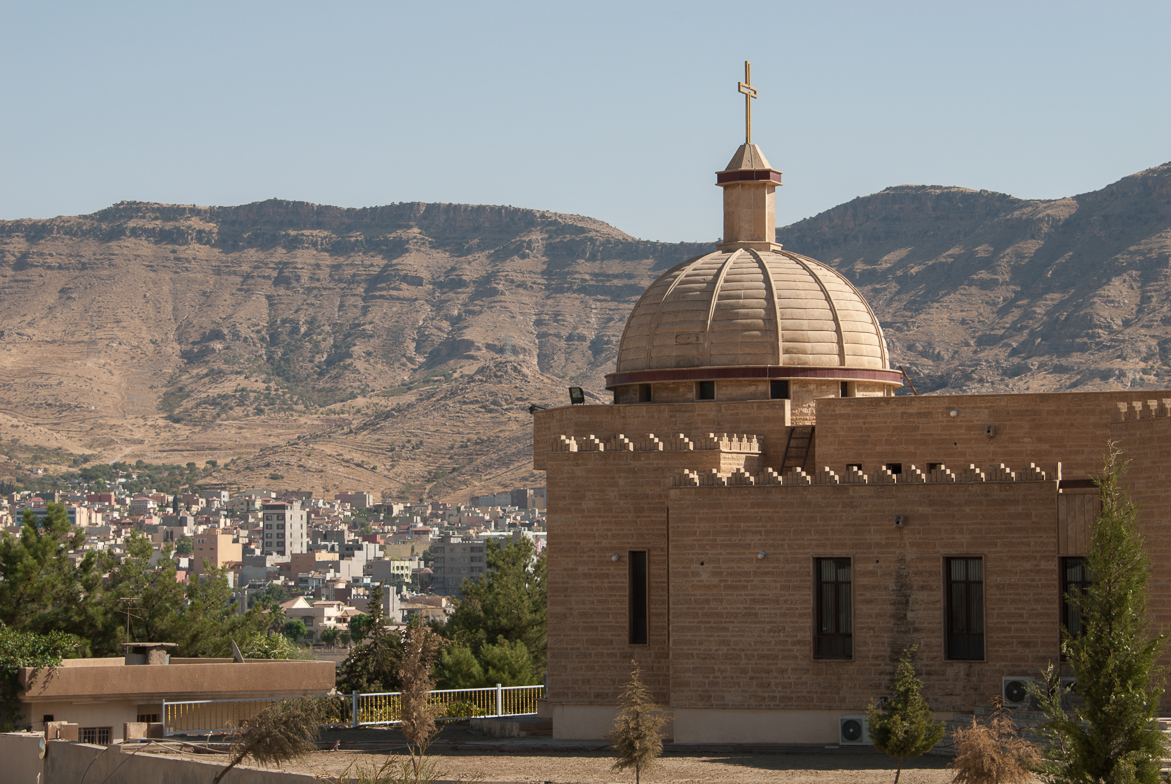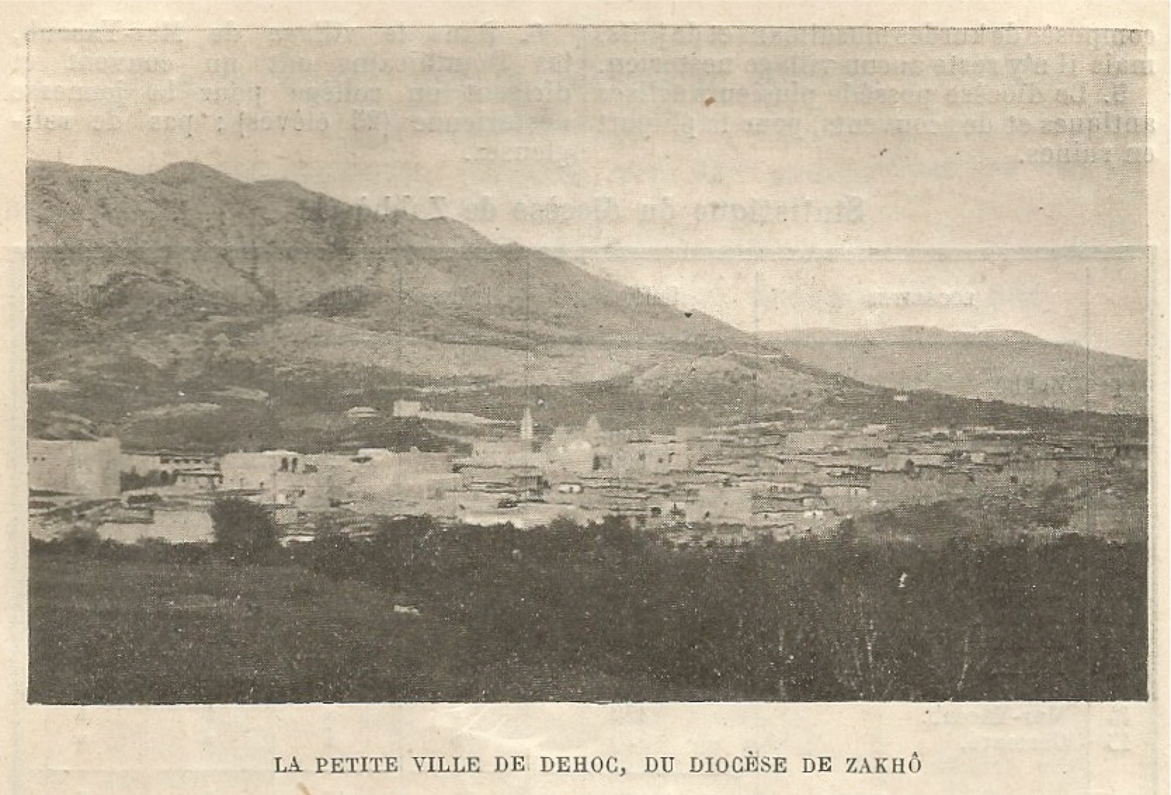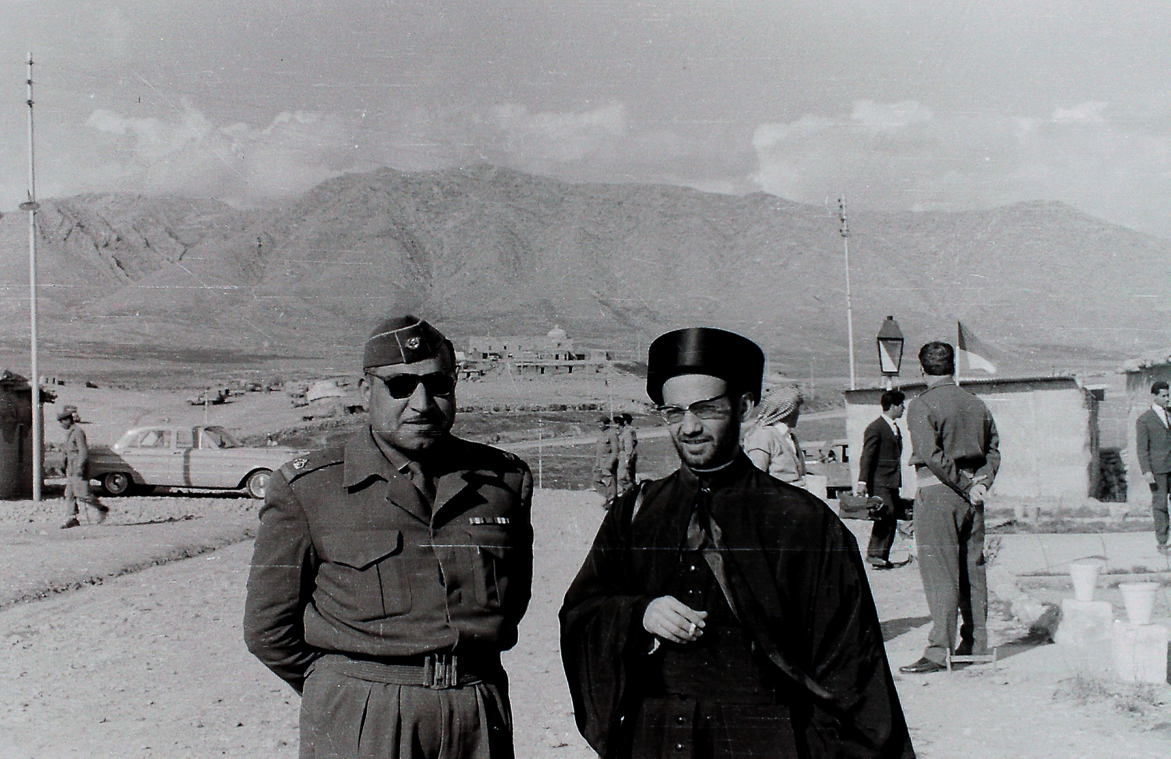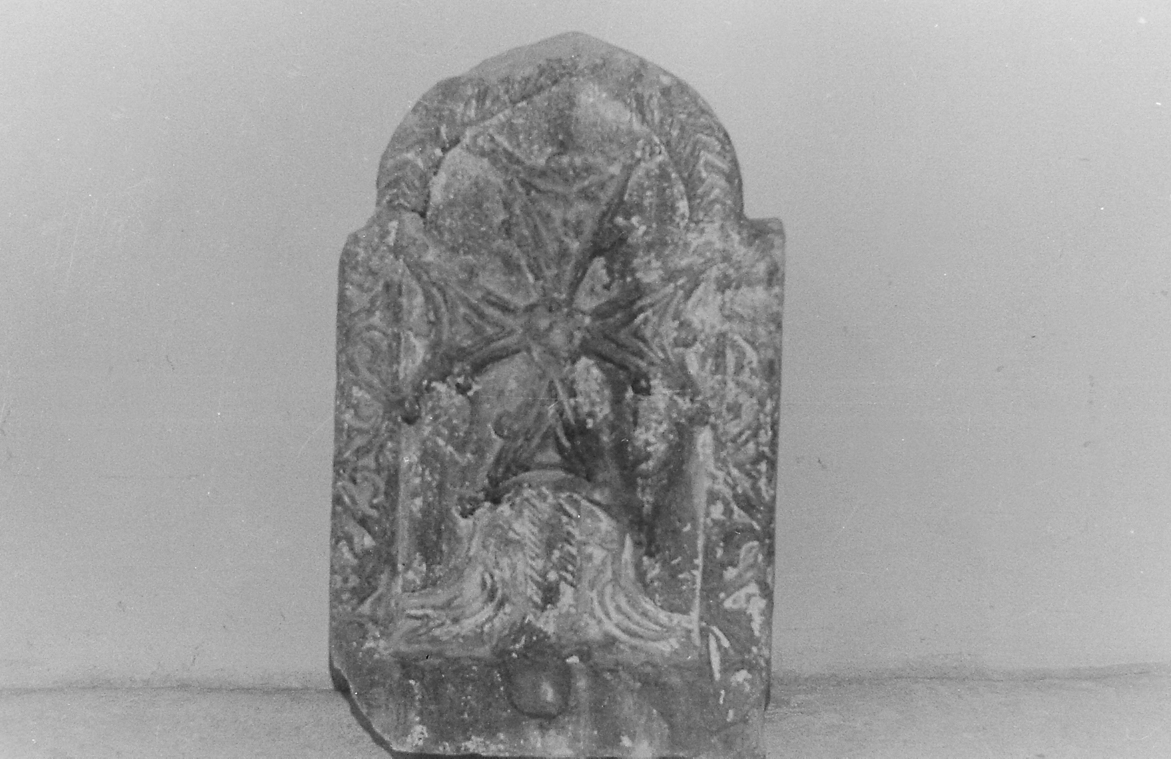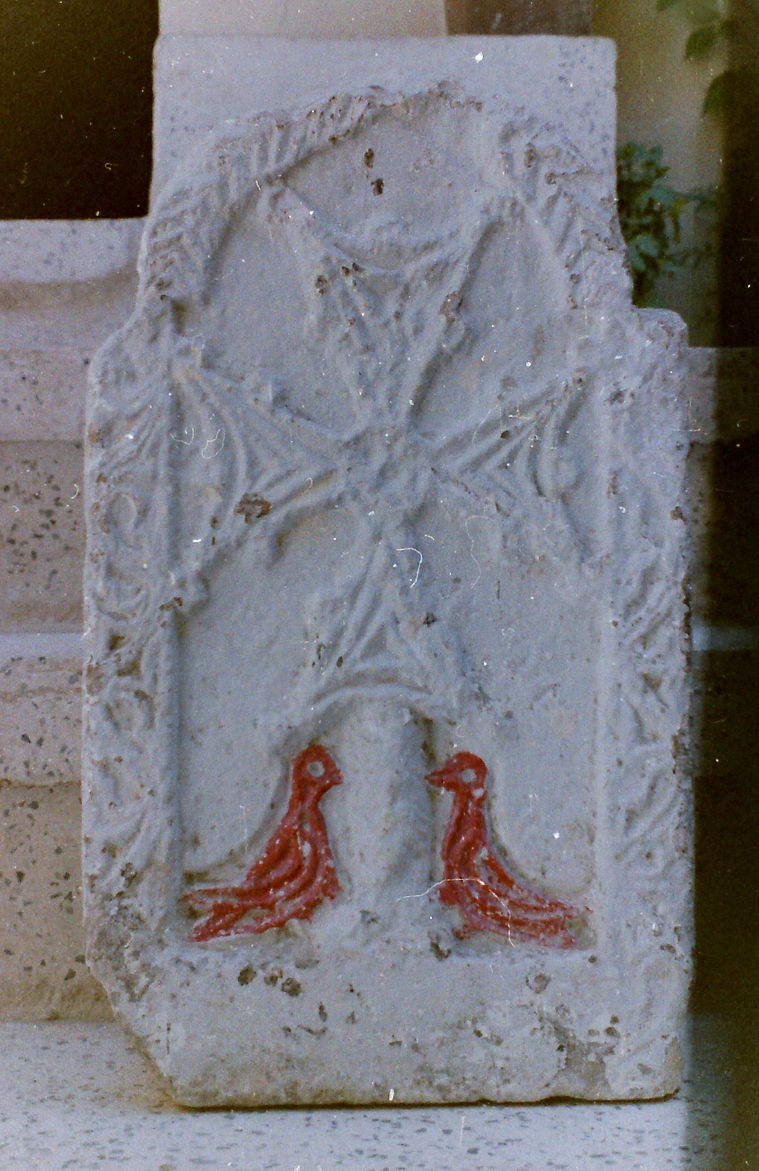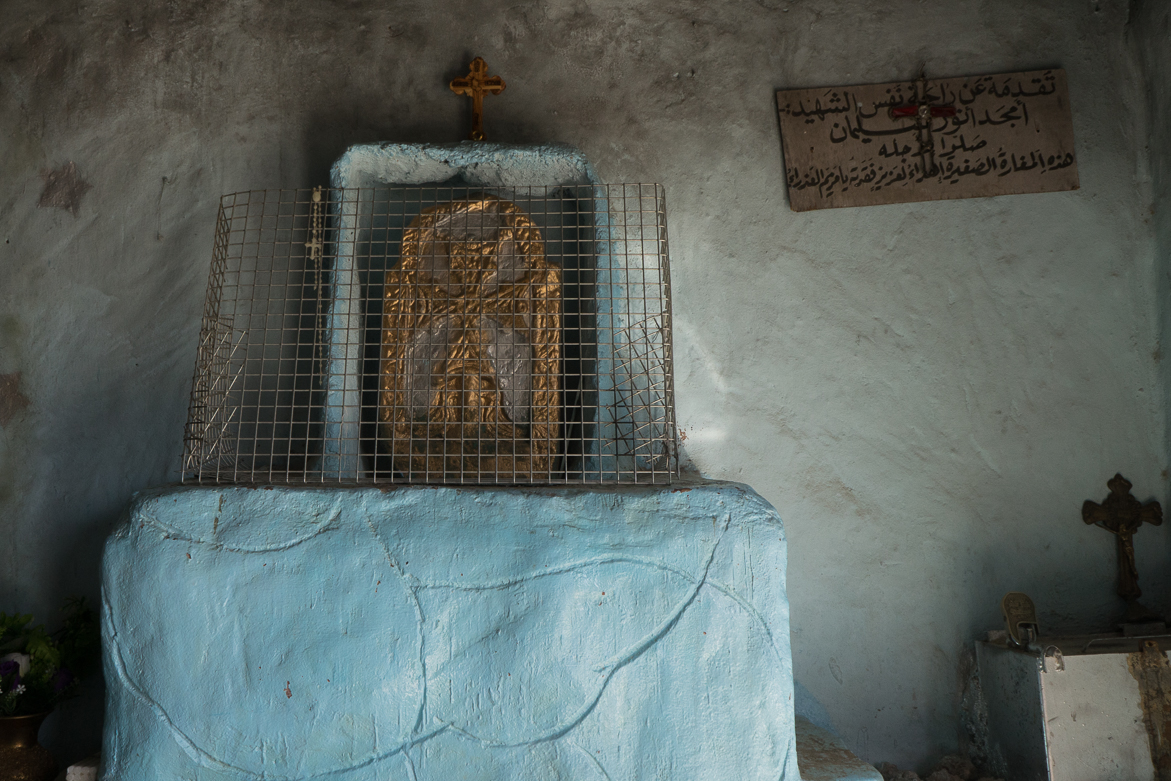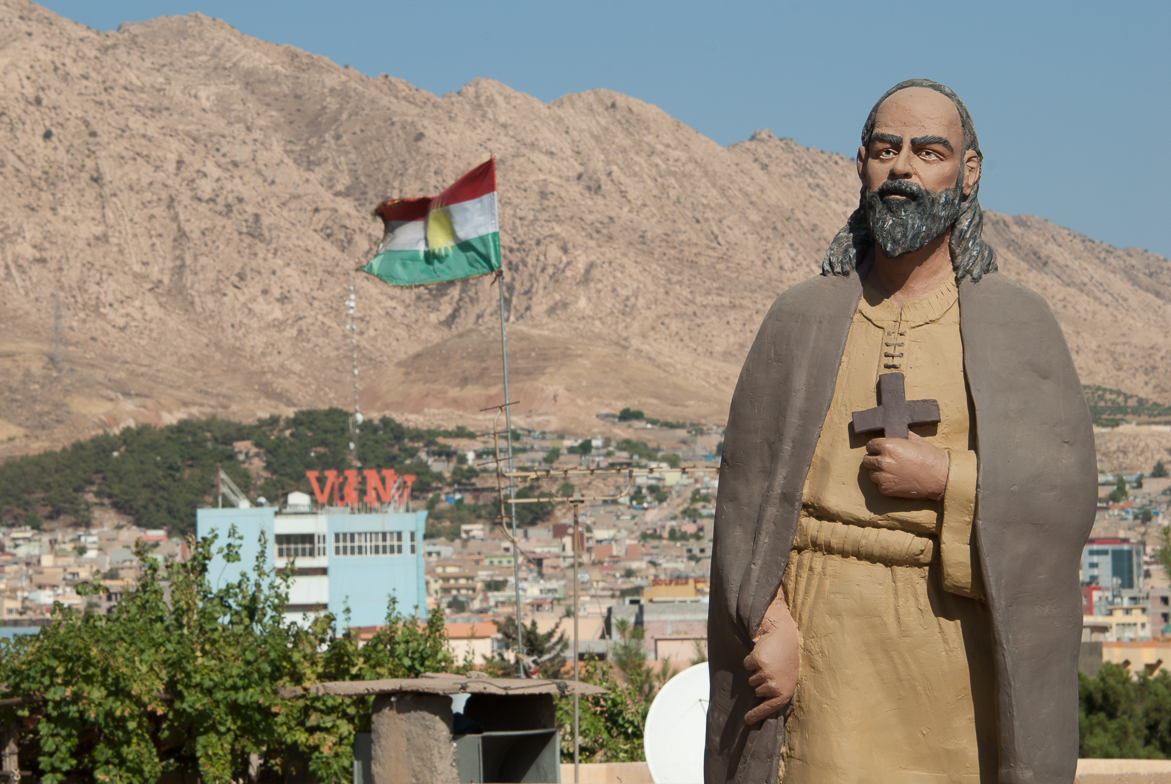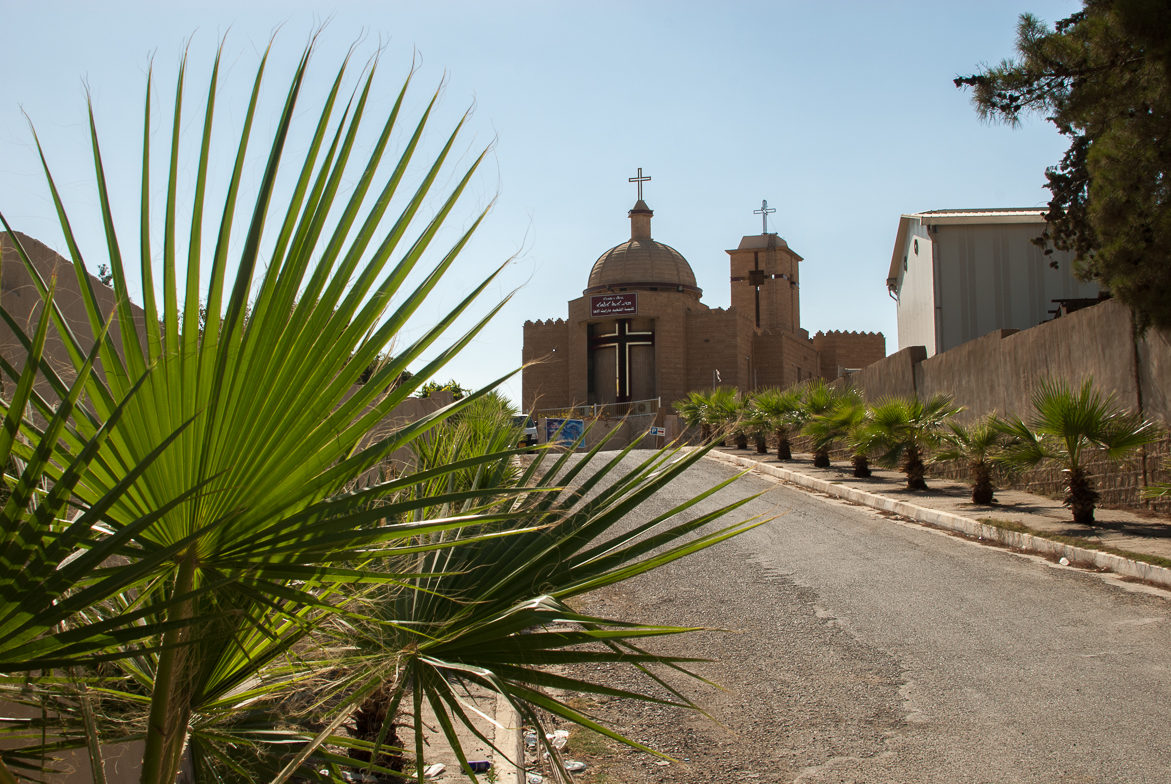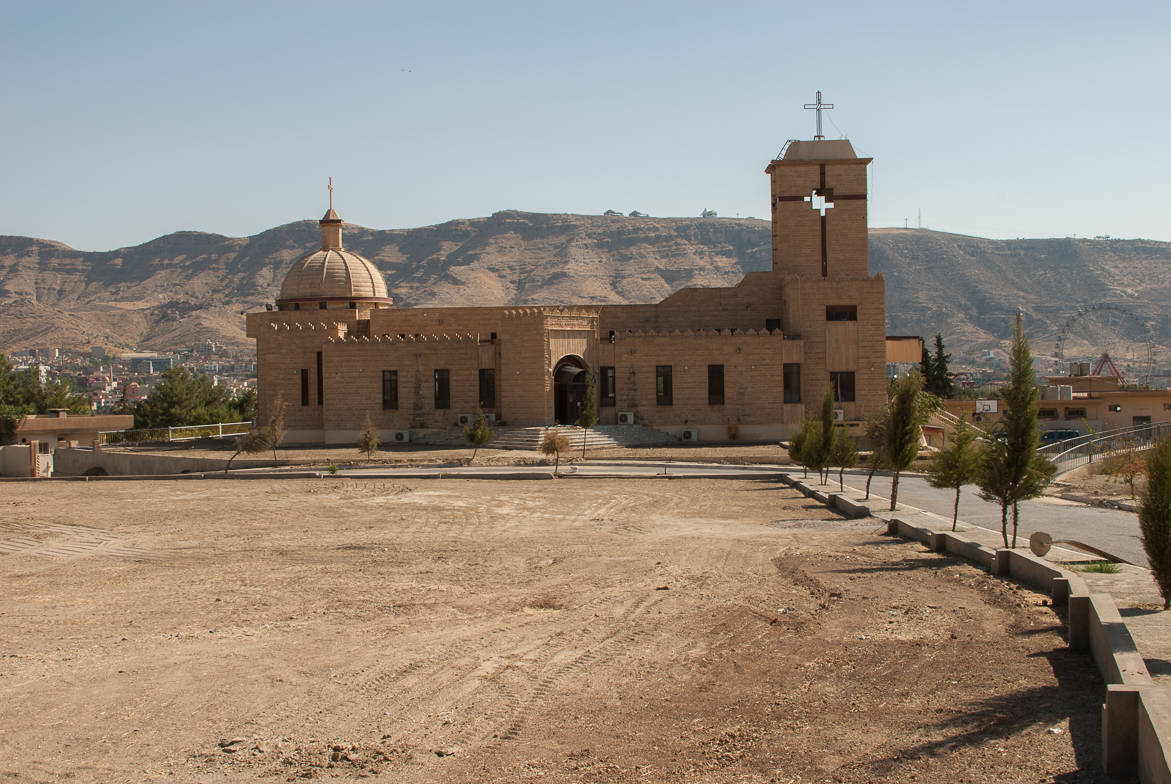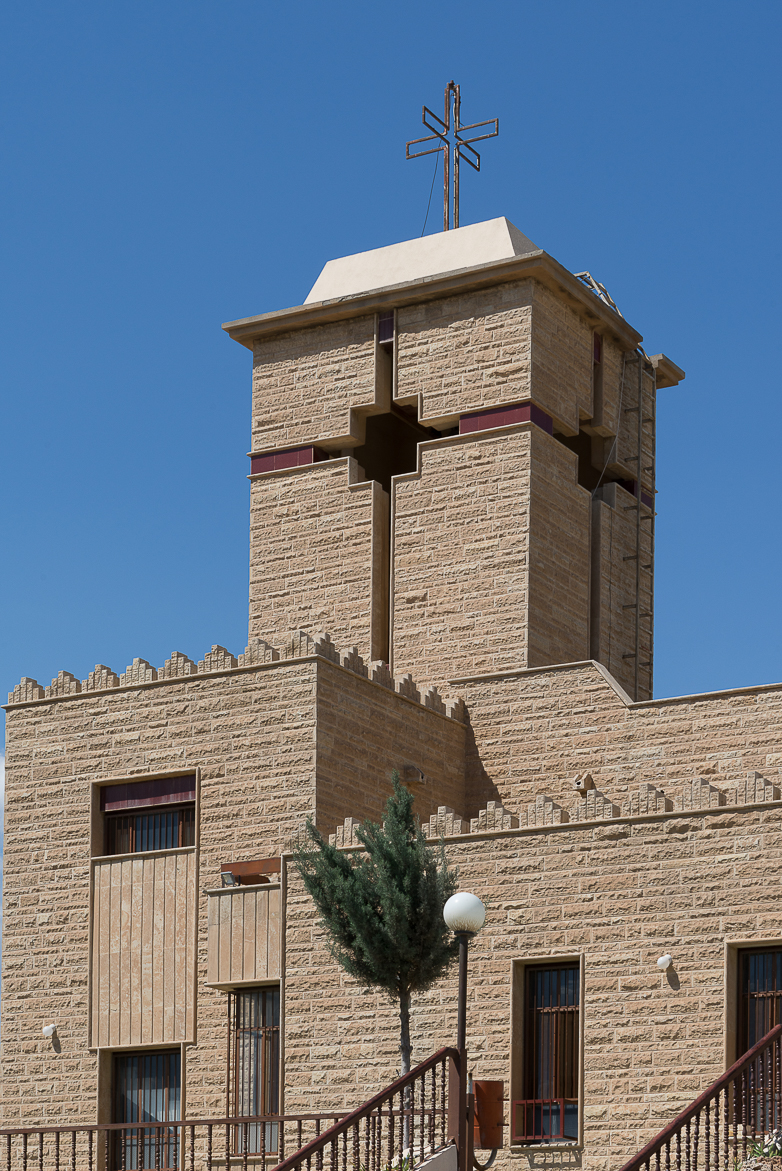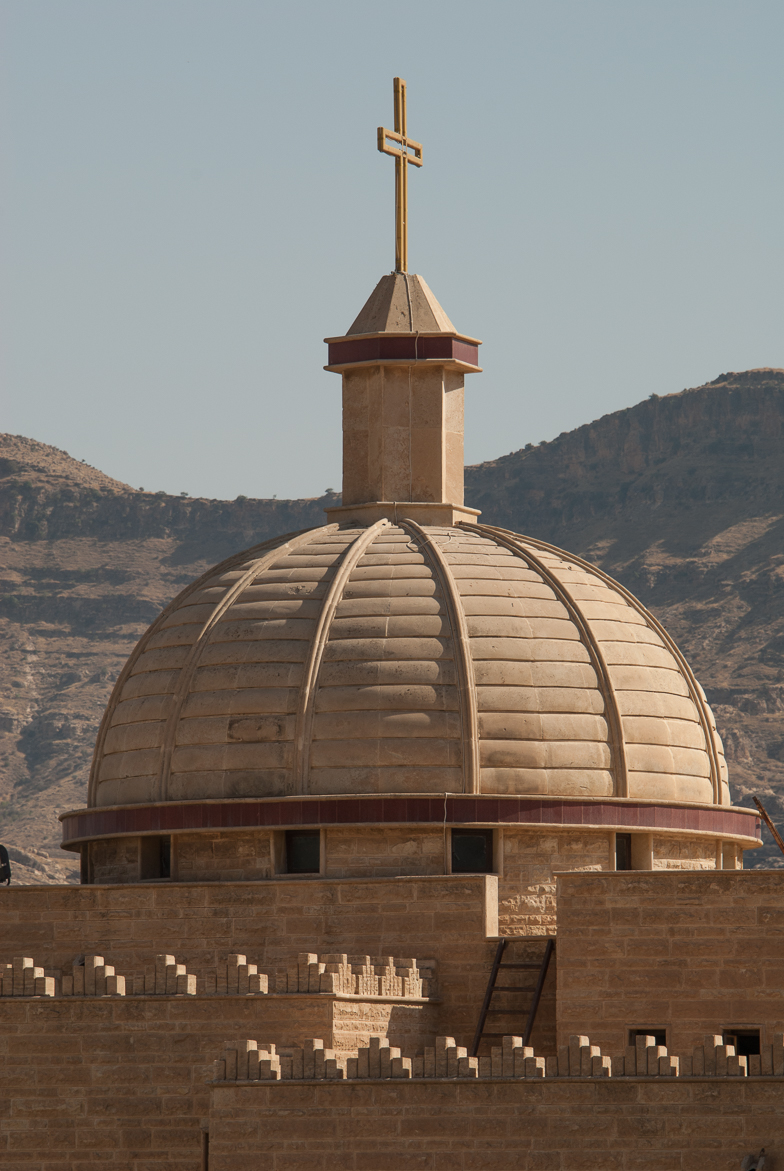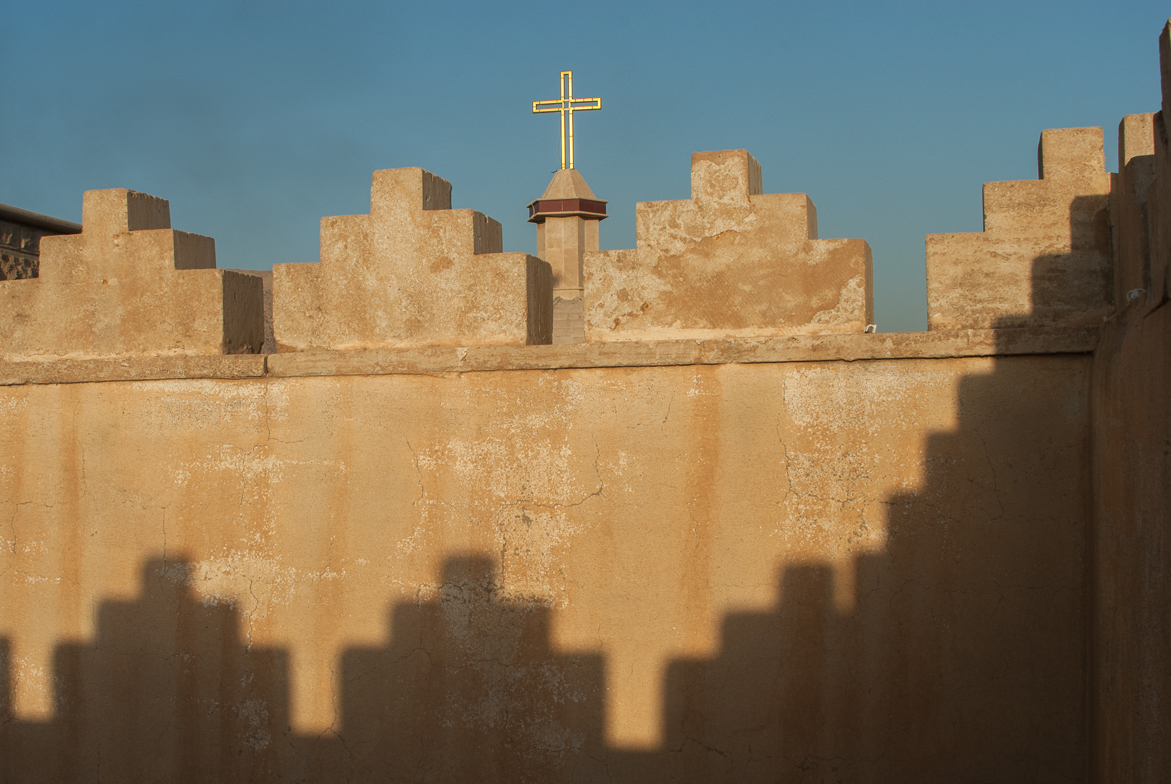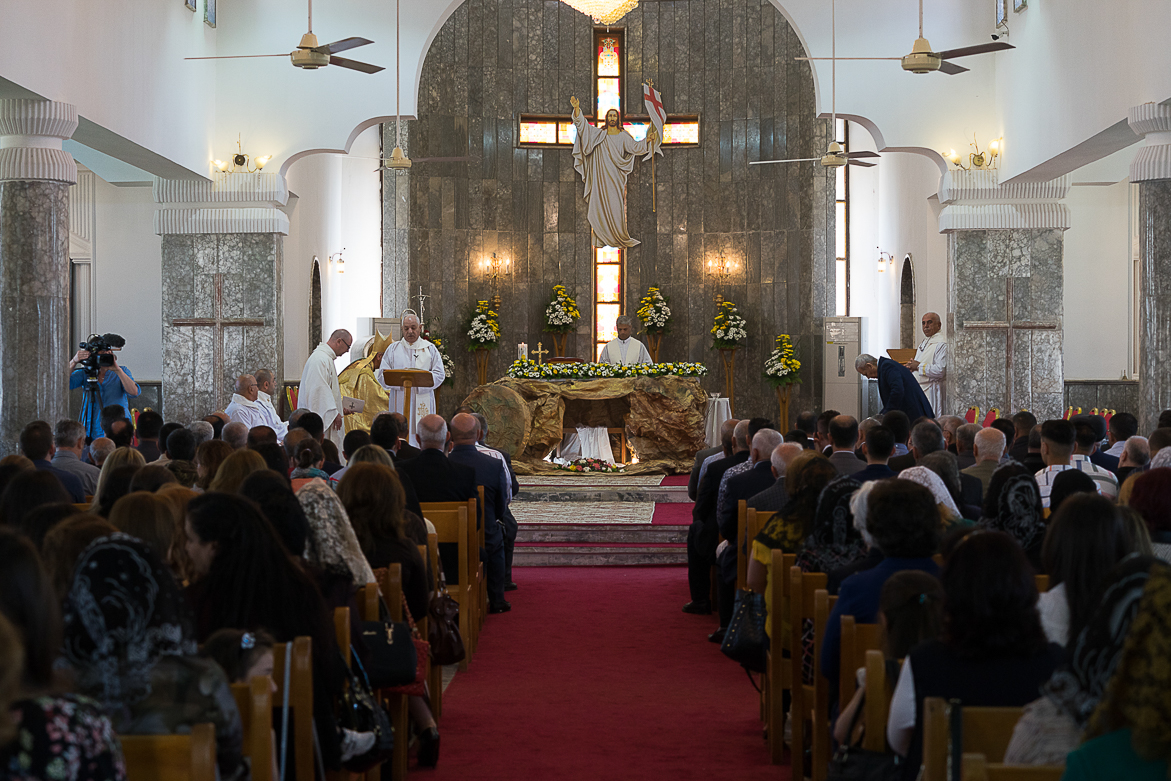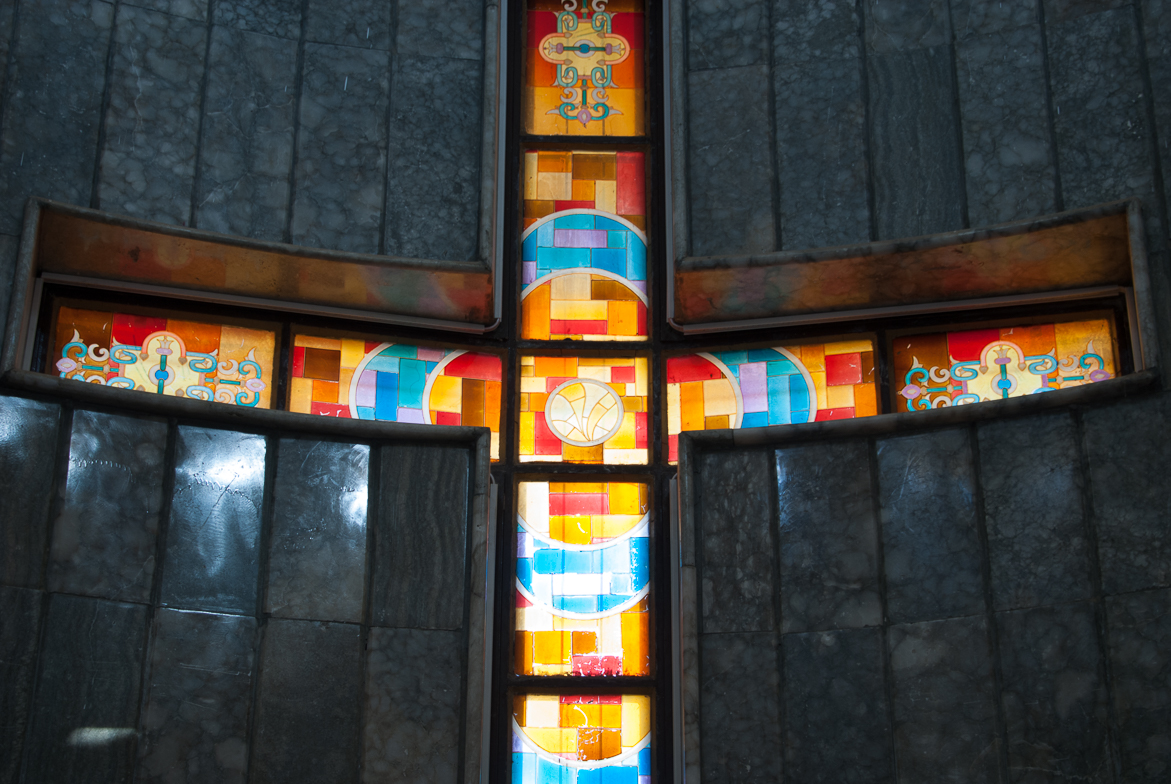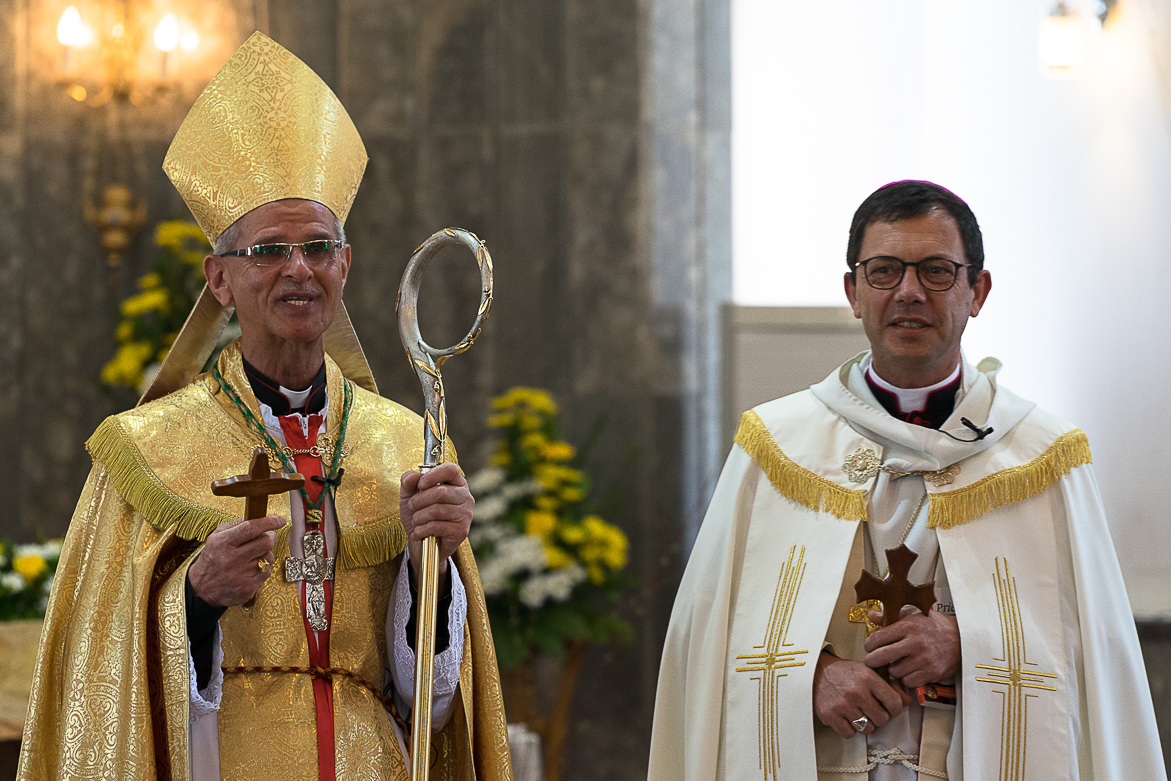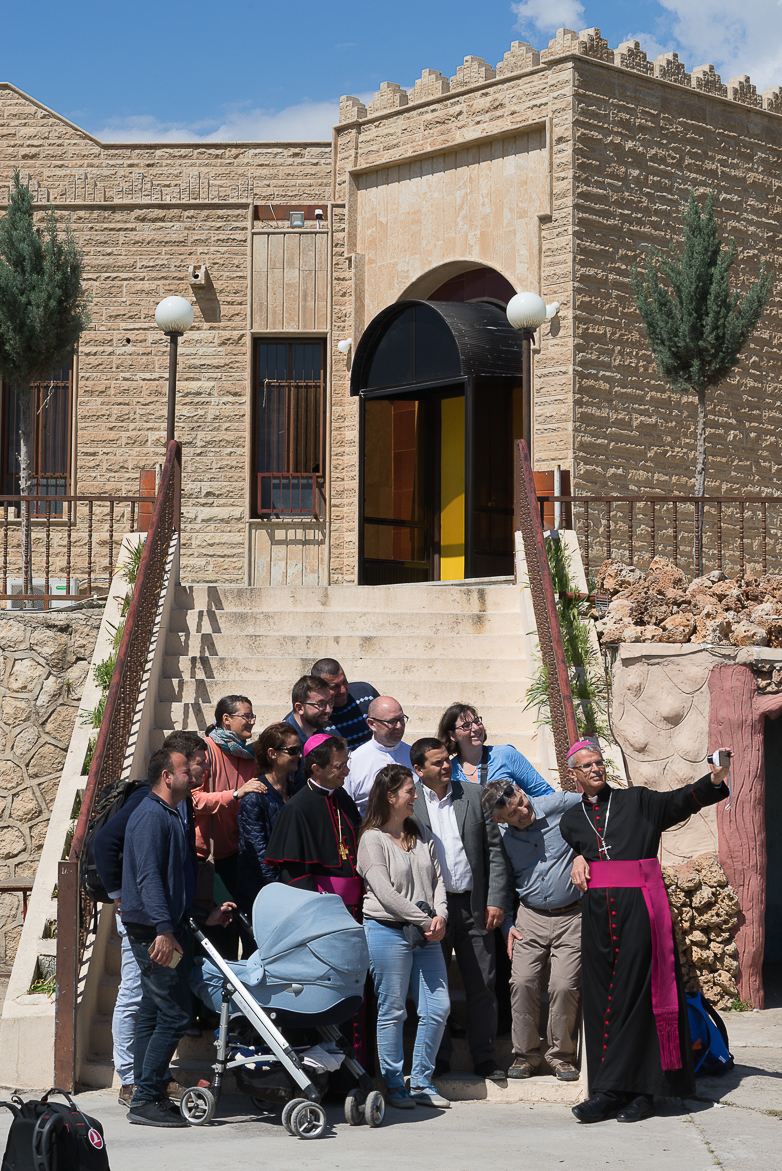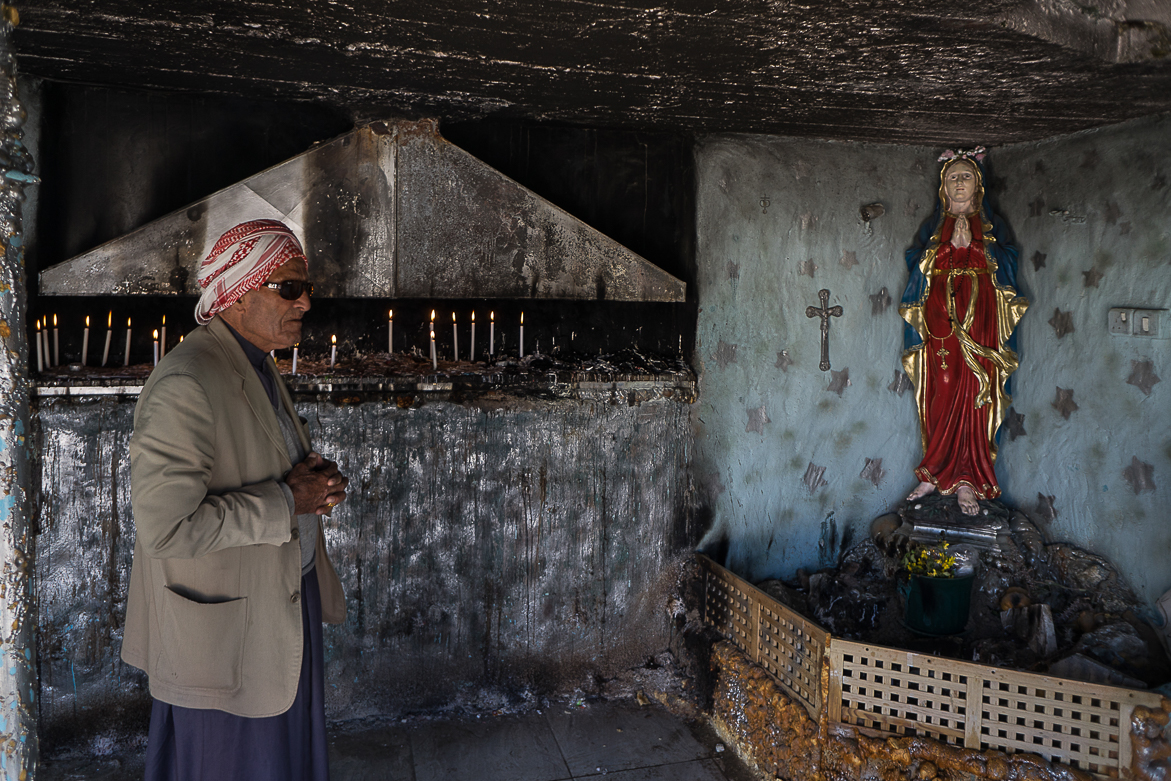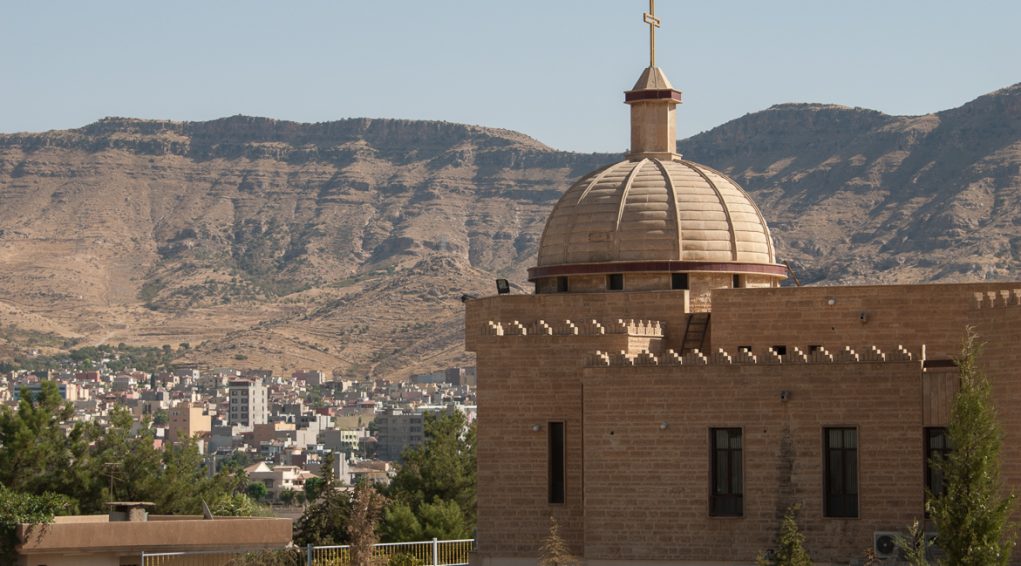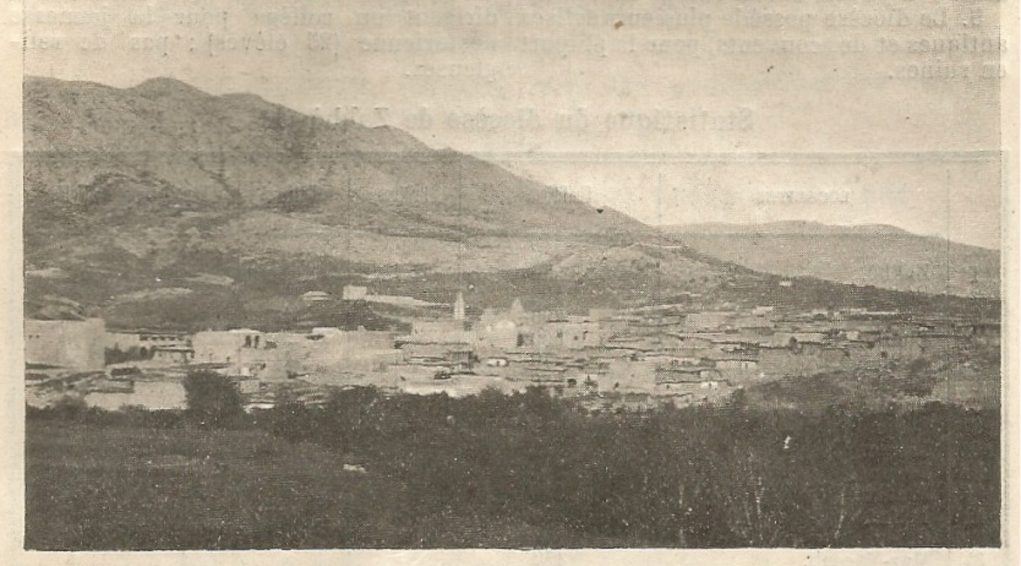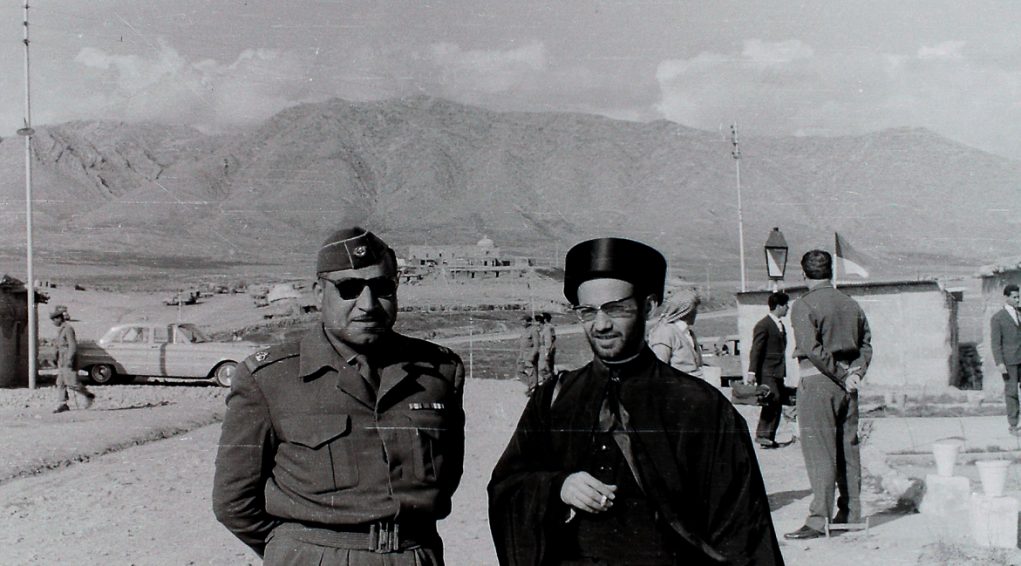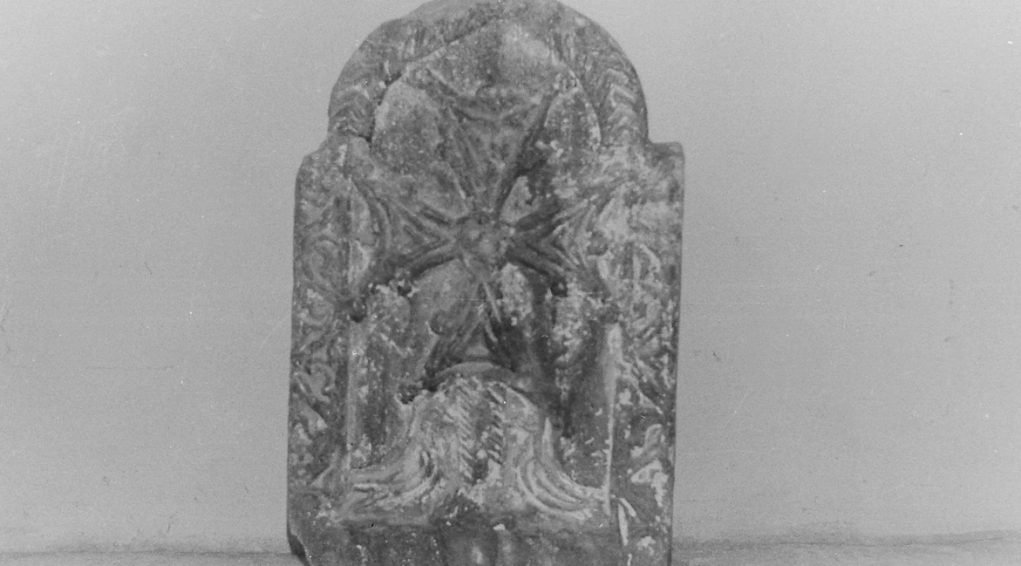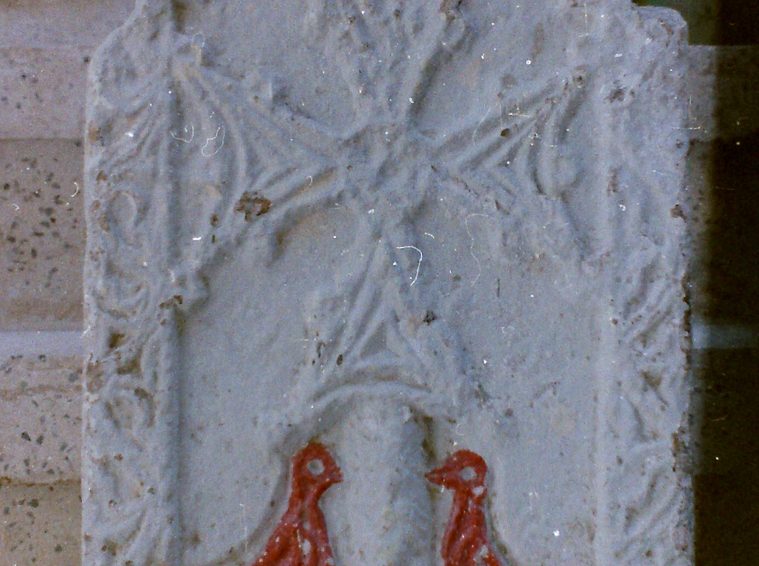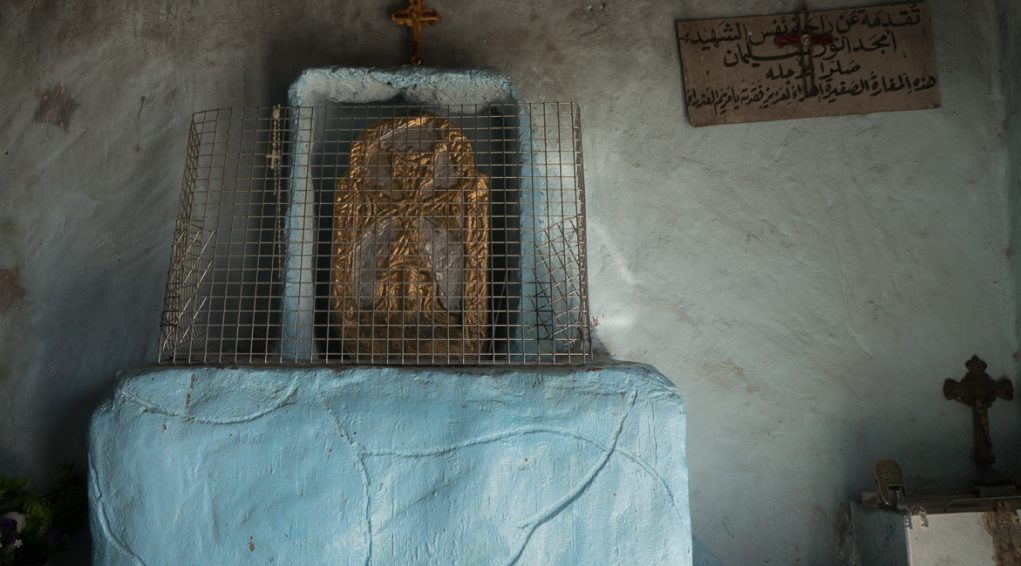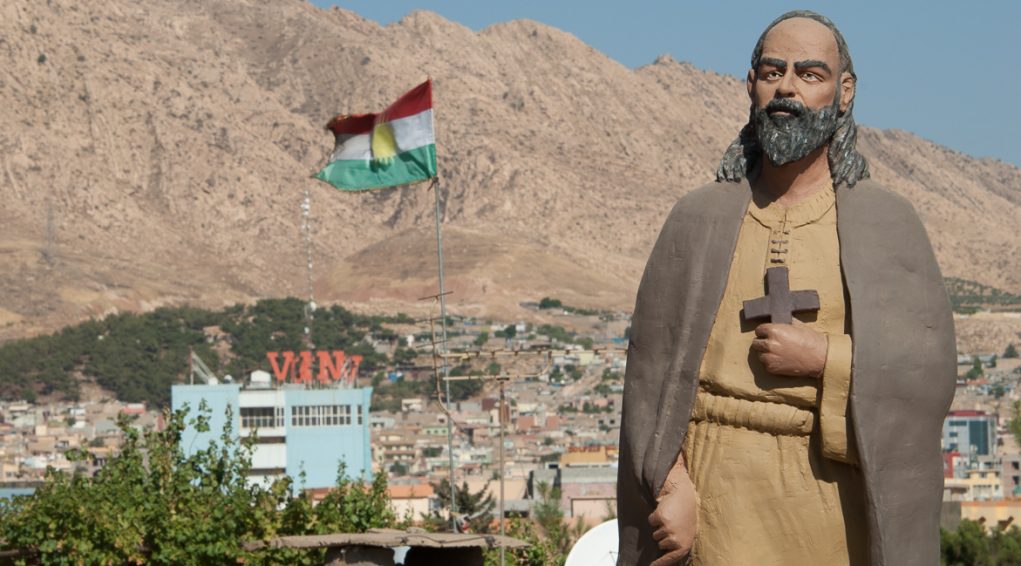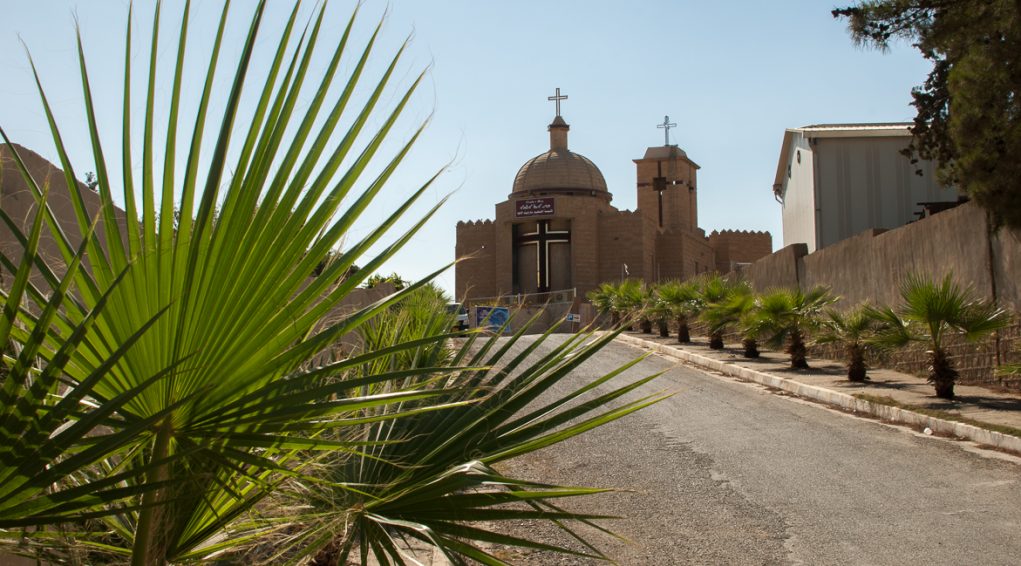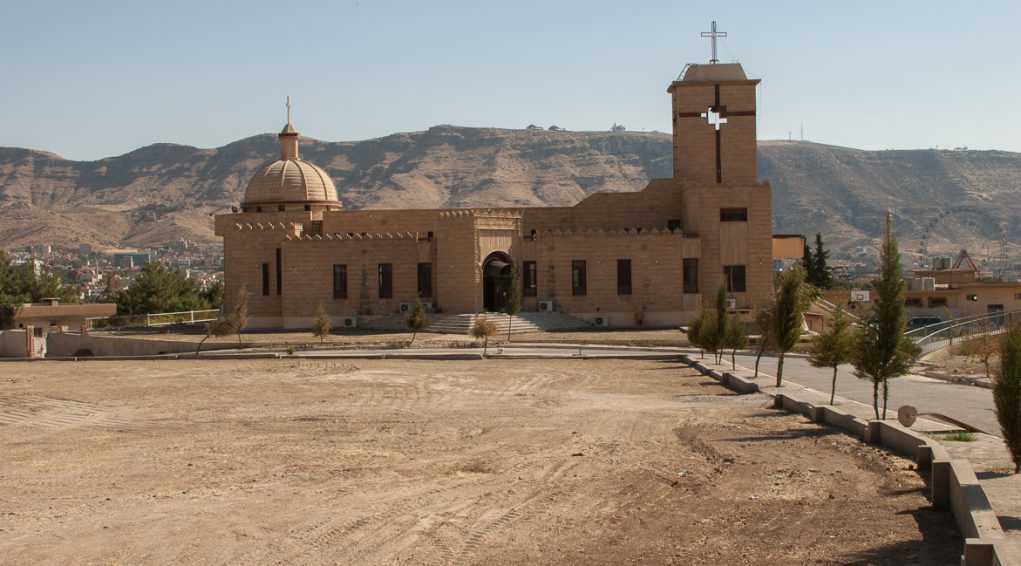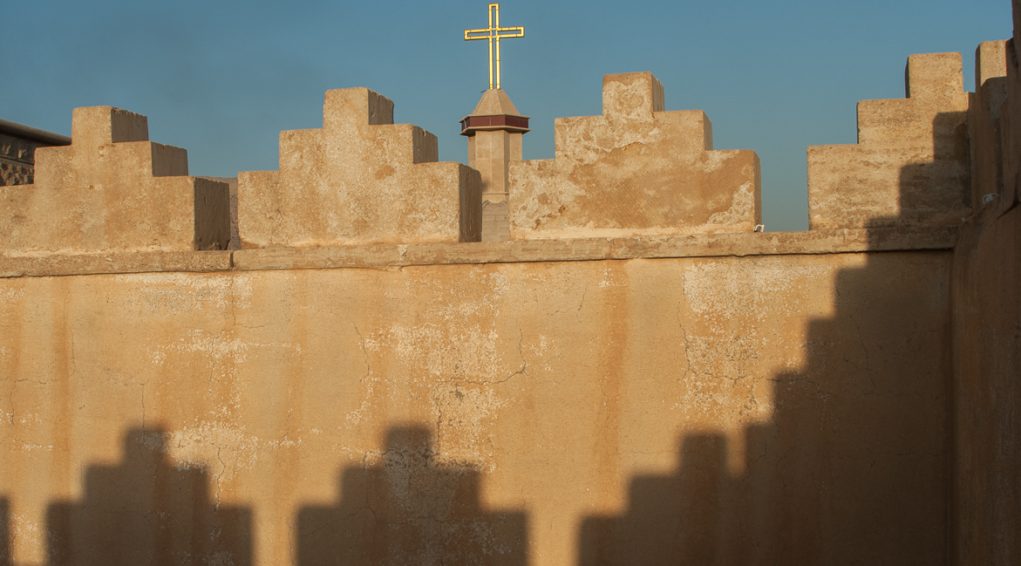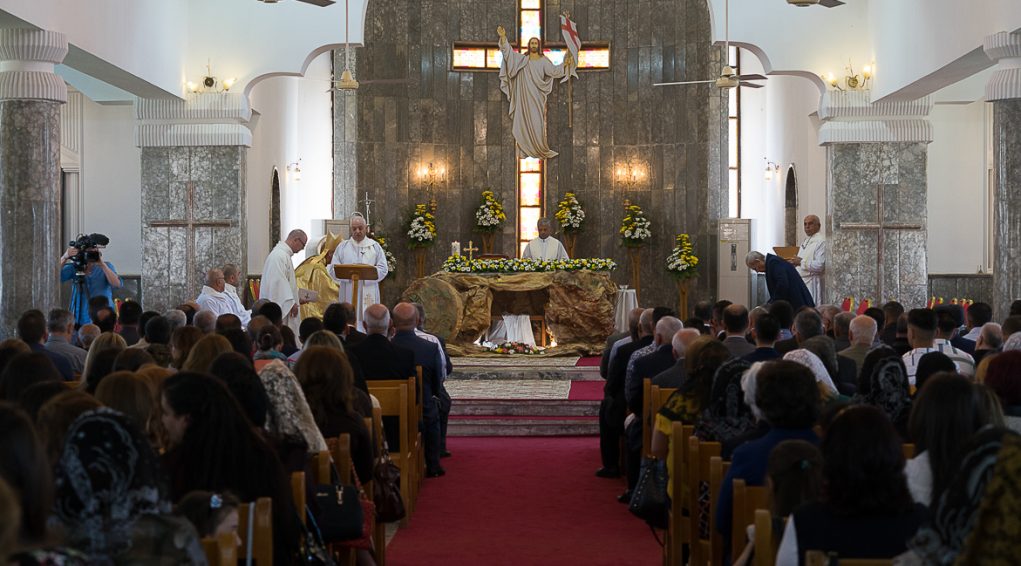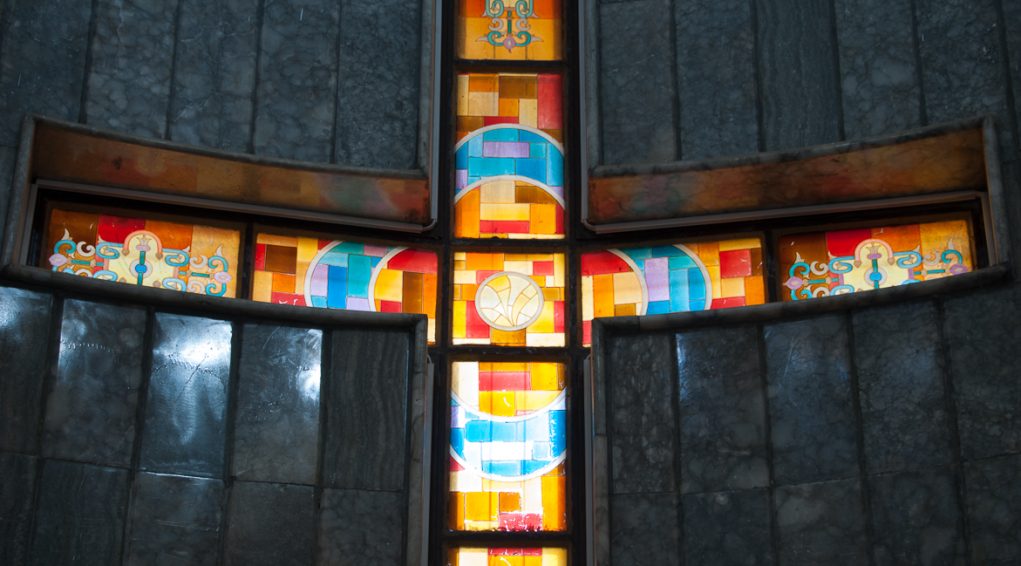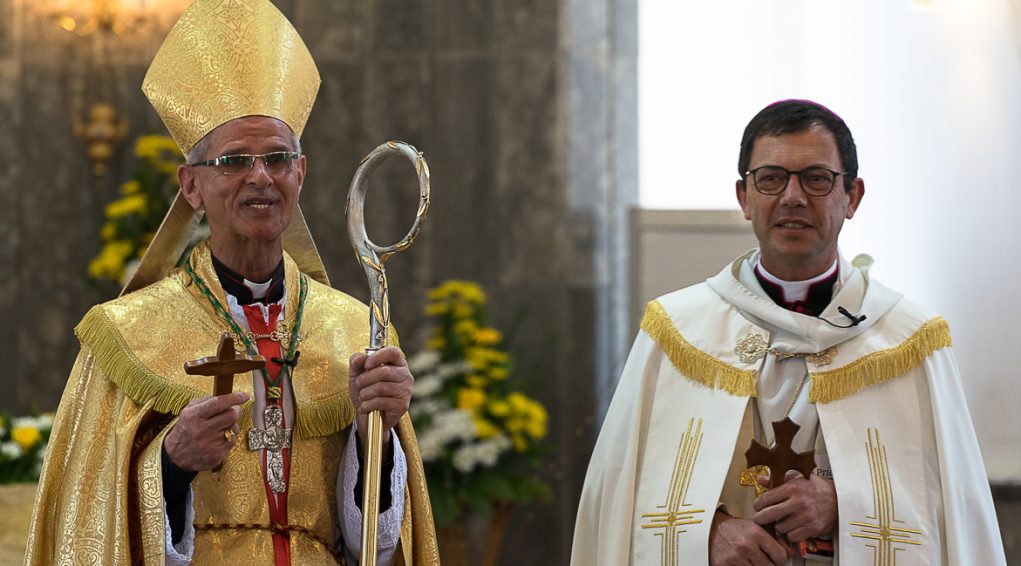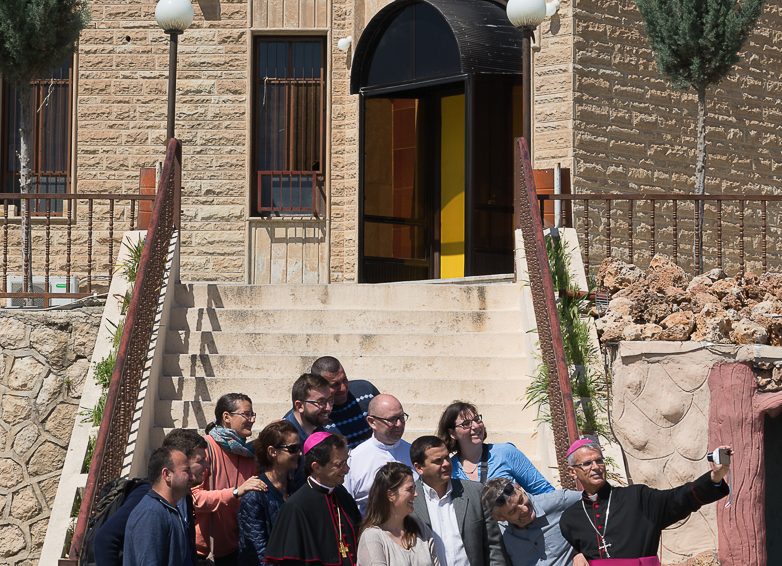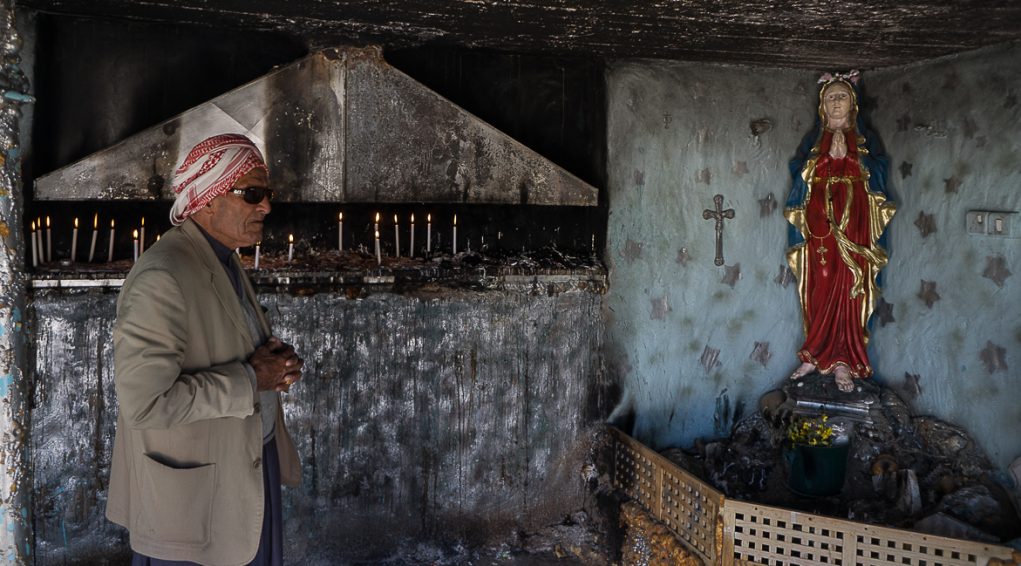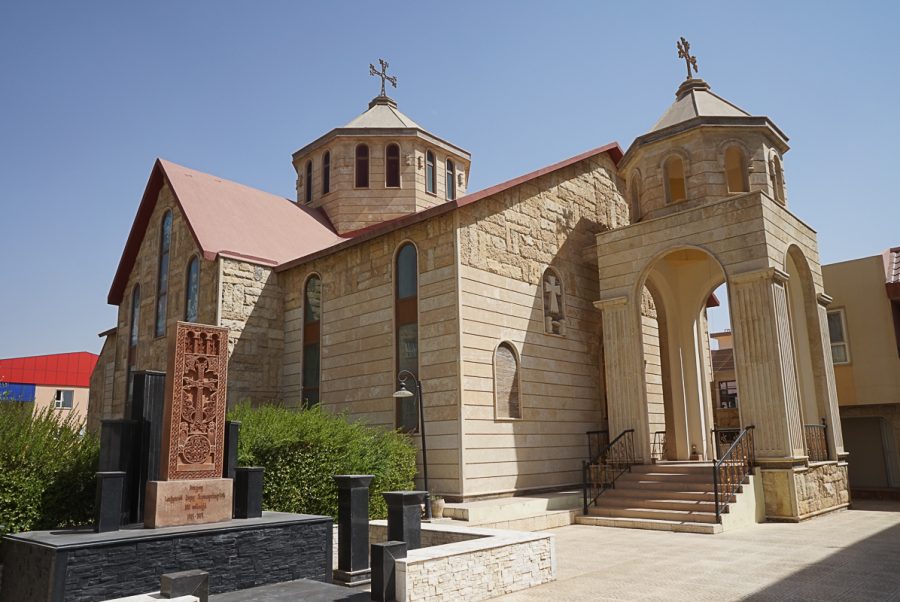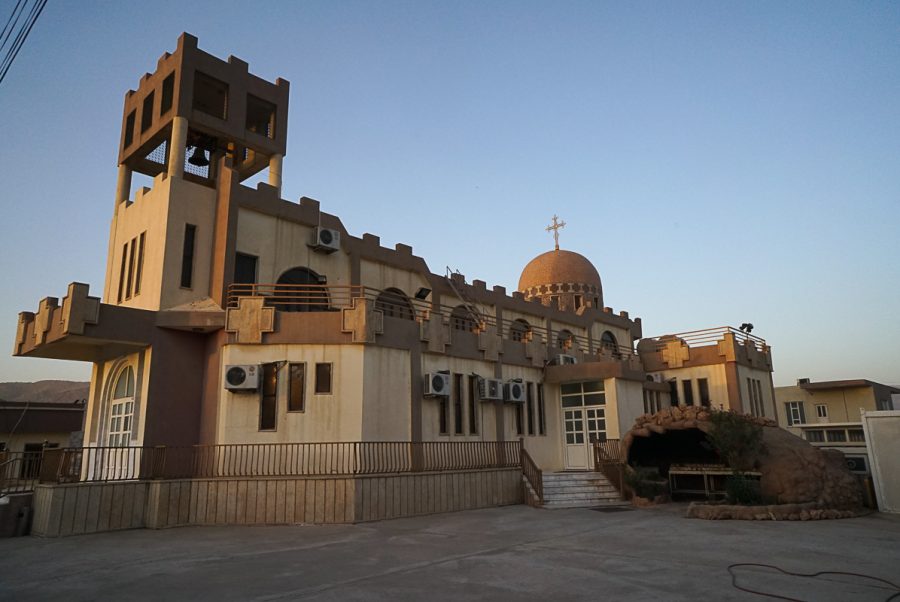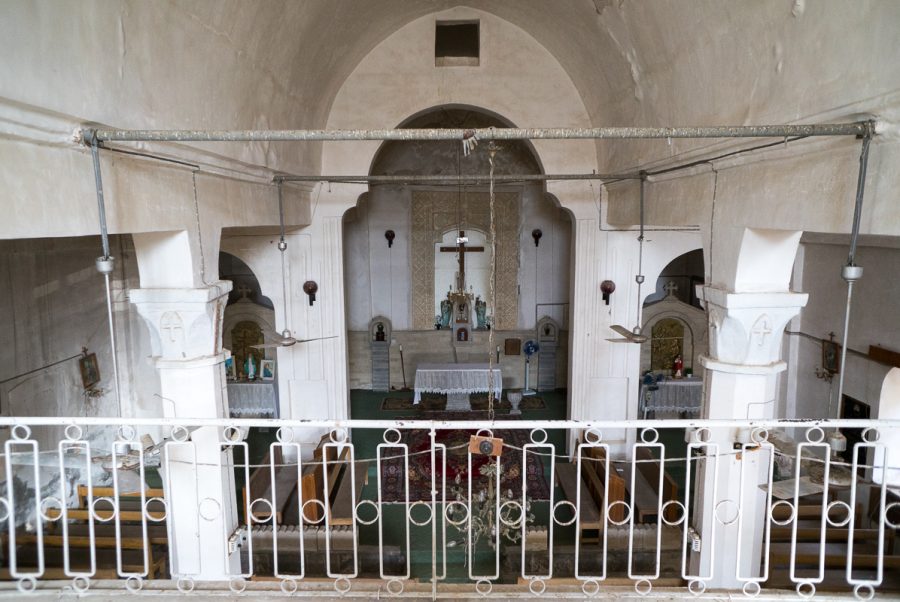Mar Ith-Alaha Church in Dohuk-Nouhadra
Mar Ith-Alaha Church in Dohuk (Nouhadra in Syriac) lies 36°51’43.00″N., 42°59’6.00″E. and 543 meters high. Until the fall of the Ottoman Empire, the population in Dohuk was mainly Christian. Today, Dohuk’s population consists mostly of Kurds, Sunni Muslims.
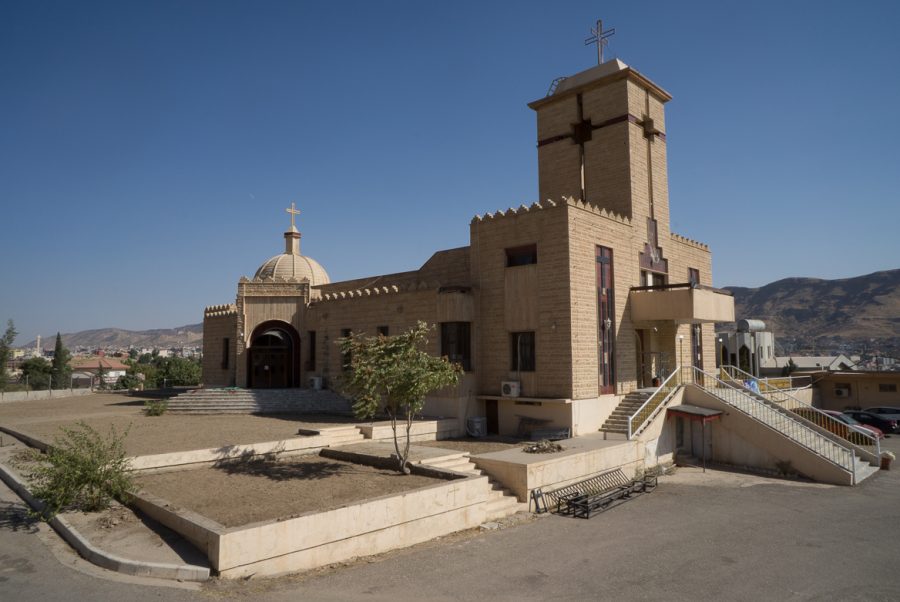
The primitive church Mar Ith-Alaha is supposed to be one of the most ancient, if not the most ancient, churches of Dohuk.
The sources analysis states the existence of a convent bearing this name in the 7th century.
The present building has been built at the very same place as the ancient Mar Ith-Alaha church. It has been restored, transformed, enlarged many times throughout the 20th century up to nowadays.
Location
Mar Ith-Alaha church lies 36°51’43.00″N 42°59’6.00″E and 543 meters high in the city of Dohuk (Nohadra in Syriac), in the heart of the Iraqi Kurdistan autonomous region. Dohuk is the administrative centre of the Dohuk district and benefits from a very favourable geographical situation, 75 km north from Mosul and 155 km north-west from Arbil, the regional Kurdish capital city.
Lying back onto the mountain range which lines the northern part of Iraqi Kurdistan, and open onto the plain which runs along the eastern bank of the Tigris river, Dohuk is at the crossroads of paths and influences.
Toponymy
As often in Mesopatamia, Dohuk contains in its toponymy’s history the variety of cultures and civilisations that succeeded one another. Kurdish-speaking persons will prefer Duhok, whilst Arabic-speaking people will choose Dahuk, whereas Syriacs would rather keep Nohadra.
Fragments of Christian history
Up to the fall of the Ottoman Empire, the Dohuk population (Nohadra in Syriac) was mainly Christian. The Kurdish raids at the end of the 19th century, the genocide of the Assyrian-Chaldeans (1915-1918) and the Simele massacre in 1933 led to deep and drastic changes of the local and regional demographic and denominational balances.
Today, the people in Dohuk consist mostly in Kurds, Sunni Muslims. The remaining Christians are mainly members of the Catholic Chaldean Church. The Church of the East, who was for over a thousand years the main denomination in Assyria, manages to preserve its historical mark in Dohuk. This transition from the Church of the East to the Chaldean Church did not occur immediately after the schism in 1553. In 1676, the Dominican missionary Ballyet, visiting Dohuk, only counted 30 Catholic families and one single church, probably the church of the Virgin Mary[1]. It is at the end of the 18th century and through the 19th century that the Chaldean Church flourished up to what it is today.
In 1913, Father Joseph Tfinkdji counted 350 Chaldeans in Dohuk, 2 priests, 1 church and 1 school [2].
Let us mention as well the presence in Dohuk of a small Christian Armenian community, non autochtonous and which, just like for the Church of the East, was very weak demographically but had however a strong integration into history.
[1] The ecclesiastical organisation of the church of the East, 1318-1913, David Wilmshurst, Corpus Scriptorum Christianorum Orientalium, Vol. 582, Subsidia Tomus 104 LOVANII IN AEDIBUS PEETERS, 2000, p.140
[2] L’Église Chaldéenne Catholique, autrefois et aujourd’hui, Abbé Joseph Tfinkdji, Extrait de l’annuaire pontifical catholique de 1914, p.72
Fragments of hagiography
Coming from a word in Syriac language, Ith’ Alaha means “The Lord exists” or “There is a Lord”. The locution refers both to the family name of an Assyrian saint and the name of the unique pilgrimage site associated to this saint in Iraqi Mesopotamia.
Available historical and scientific sources about Mar Ith-Alaha’s life are far from being sufficient to satisfy distinguished scholars like the fathers Paul Peeters and Jean-Maurice Fiey. Only the tradition remains. According to it, Mar Ith-Alaha was a martyr in the 4th century, around 379, victim of the Persian Sassanian king Shapur II, “martyrdom fellow of ‘Aqewšma, so-called bishop of Hnīta and of the priest Joseph” [1] . The tradition in the Chronicle of Seert also related that a myrtle grew at the very place of Mar Ith-Alaha’s martyrdom. And it is again at this very place, as it is mentioned in the Book of Chastity, that the church Mar Ith-Alaha had been raised: “after a while, the believers built a famous monastery which carried the name of the Blessed one” [2].
Mar Ith-Alaha primitive church would then be one of the most, if not the most, ancient churches of Dohuk. According to some sources’ analysis, there was indeed a convent that bore his name in the 7th century.
The current building, many times restored, transformed and enlarged during the 20th century and until nowadays, has been raised at the place of the ancient Mar Ith-Alaha church. From one church to the other, can we actually assert that it is the site of the primitive church? This question is even harder to answer as there are almost no archaeological traces left from the previous days.
Jean-Maurice Fiey has been able to detect more than 50 years ago « traces of walls which prove the extension of the ancient monastery and tombs which were probably those of the monks and of the believers who wanted to be buried next to the martyrion” [3].
In the past, the monastery had its own water spring, where local people could get graces, healings and miracles. The spring observed by Jean-Maurice Fiey has moved ¼ hour walk from the church.
[1] Assyrie Chrétienne, Jean-Maurice Fiey, p.703-704
[2] ibid., p.704
[3] ibid., p.705
Church description
Built upon an esplanade that can be accessed to by a gentle slope ramp, the current Mar Ith-Alaha church shows a massive and modern structure made of bonds and reinforced concrete, warehouse-shaped, with crenellation on the top, typical of the neo Babylonian architectural style and still often used today by the Chaldean Church, in Iraq just like in diaspora.
Its two-levelled flat roof consists of terraces at the end of which stand the dome on one side and the bell tower on the other site.
On its eastern side, just above the apse, the circle dome rests on a narrow drum and is surmounted by a little fake roof-top lantern with a metal cross.
On its western side, the square-based bell tower stands above the entrance porch and is also surmounted by a large metal cross.
On each side of the building, a door opens on the side-aisles. The southern door is the usual door frequently used for getting in and out of the church for ordinary celebrations.
The inside of the church shows quite classical features. The nave and the side-aisles rest on three pairs of round Mosul marble pillars and a pair of square pillars at the entrance of the choir.
The nave’s vault is higher than the side-aisles’. At the end of it, behind the apse, the ambulatory’s wall is covered with marble slabs and has a large Latin cross pierced right in its middle, whose body and arms are adorned with sparkling patterns stained-glass windows.
For the rest, the inside of the church is quite simple. Only the beautiful grey Mosul marble gives it a so typical and original Iraqi touch.
Outside the church stands a statue representing Mar Ith-Alaha. The painted piece of art shows no real artistic or attractive value. A bit larger than human size, standing proudly in front of the Kurdistan mountain range, it seems to say “the Lord exists” just where the Christians from Mesopotamia have probably found their last refuge at the beginning of the 21st century.
The pilgrimage to Mar Ith-Alaha takes place every year, on Easter Wednesday.
Monument's gallery
Monuments
Nearby
Help us preserve the monuments' memory
Family pictures, videos, records, share your documents to make the site live!
I contribute